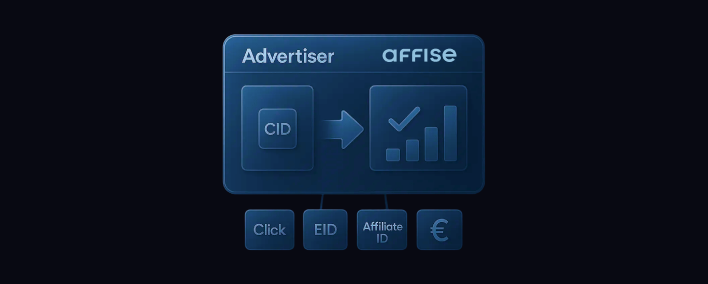- Blog
- Tips & Guides
- Swipe is the New Click? At the Intersection of Influencer and Affiliate Marketing
Swipe is the New Click? At the Intersection of Influencer and Affiliate Marketing
Influencer marketing is on its rise nowadays, drawing attention of marketers due to its power in increasing brand awareness. The rise of this phenomenon goes back to the 00s, when bloggers started posting ‘guest’ ad articles. But the invention and development of social networks brought influencer marketing to an enormous level and, consequently, defined it as a separate digital marketing branch.
Taking a Closer Look at Influencer Marketing
Influencer marketing is focused on finding influencers, creating relationships with them and using these relationships to target social media audience. It is determined by the fact that the world nowadays is overcrowded with ads. Thus, people no longer trust beautiful descriptions in the banners, but, before making a purchase, tend to rely on the testimonials, especially of those people, who are influential for them. What is there to say, 75% of people admit making a buy basing on something they’ve seen on Instagram. As a result, customers move from usual e-commerce to social networks, used by influential people to sell and to advertise. And social networks try to follow the trend, implementing tools to do shopping or promote without even leaving them, like Instagram swipe up feature.
The key of influencer marketing are the people that have an influence in certain subjects and are followed by a great number of followers that share their opinion and listen to their views. Thus, the impact that influencers have over the mass audience is numerous, making it easier for companies to get their product or service shown to thousands or millions of people at a price that sometimes is lower than of traditional advertising. In addition, since influencers act as opinion leaders, companies get much closer to the target audience, which, in turn, feels the urge to keep closer to the opinion leader, their lifestyle, and, consequently, to the companies.
Evolution of Influencers
Within past year influencers started dividing into several forms. Now we have mega, macro, micro and nano influencers.

While influencer marketing was mostly about mega and macro influencers before, now, the trend of 2019 is the rise of nano, macro, and mid-tier influencers. Why? The answer lies in one of the main benefits of influencer marketing mentioned above: being closer to customer. Previously it was about the number of followers that mattered. Now the shift was made to the importance of the audience percentage that replies to the content of the influencer — so-called loyalty and engagement. With the reduction of scale the connection between the opinion leader and their followers is getting stronger, as a result, allowing companies get more social media coverage with greater output.

Source: socialpubli.com
Brands tend to move to personalized approach and word of mouth, leaving the urge to get to as big audience as possible at once. If we take a closer look at the numbers, we’ll see the following picture. While previously in the list of influencers there could be up to 10 influencers in general, nowadays, the amount may be equal to thousands. Doesn’t it look similar?
Influencer vs Affiliate Marketing
It is easy to mistake influencer marketing and affiliate marketing as the essence of each is brand promotion in return for monetary compensation. In addition, some influencers may be signed up for an affiliate program, what makes these terms interlapse even more.
The most obvious differences between the two marketing forms lie in their payment method and the channel of promotion. Affiliates are paid a certain percentage of a specified action, like conversion. Influencers are paid upfront with a compensation that was agreed upon, whether it is a general/per post fee, or a free product. Considering channels of promotion, it is usually web and social networks accordingly.
But what is really distinctive about these forms is the way affiliates and influencers advertise. Affiliates make use of the creatives that are usually depersonalized (i.e., have no relationship with the affiliates themselves). Influencers, in turn, use their personal brand for a promotion. They implement it into their lifestyle by testimonials, native advertising, and product placement.
And, what is important, both affiliates and influencers are great at what they do, supported by experience and vision. It is not about who is more effective. The key is that affiliates sell goods and services, and influencers sell emotions and lifestyle.
How to complement influencer and affiliate marketing with each other?
Since affiliate marketing and influencer marketing do intercept with each other, it is possible to use their distinctive features for the enhancement of your performance. Both these forms are successful when applied within specific campaigns. Thus, define your goals, your audience and where they spend most of their time, and your budget to find out which form is handy in particular situation.
If you prefer to deal only with influencers, you may want to try the following ideas. First, what about applying affiliates’ payment method? For example, take CPA (cost per action) model that implies paying for every needed action carried out. That would provide you with flexibility and enhanced control over budget as you will be able to see the quantitative results of your influencers’ performance clearer. Next, borrow the methodology for data recording and ad campaigns optimizing from affiliate marketing. With its help, you will be able to keep track of the metrics as well as traffic and performance indicators used by affiliates that at least lead to figuring out the most effective influencers for each situation.
Do not miss the opportunities to boost your efficiency. Try to use the mix of influencer and affiliate marketing to see the difference in your performance. Strengthen the forms with the advantages of each other. Switch between influencers and affiliates to get the most out of each case or use both of them at once. To be the leader nowadays opts for being flexible and social. And there is the point where you can merge affiliate and influencer marketing.
Written by
Affise Academy
Affise is a partner marketing platform for brands, advertisers and agencies to scale via all possible performance marketing channels. Synergy of technology and our long standing experience lets you expand your partnerships, automate every step of the campaign lifecycle and make data-driven decisions.
See all articles →

















